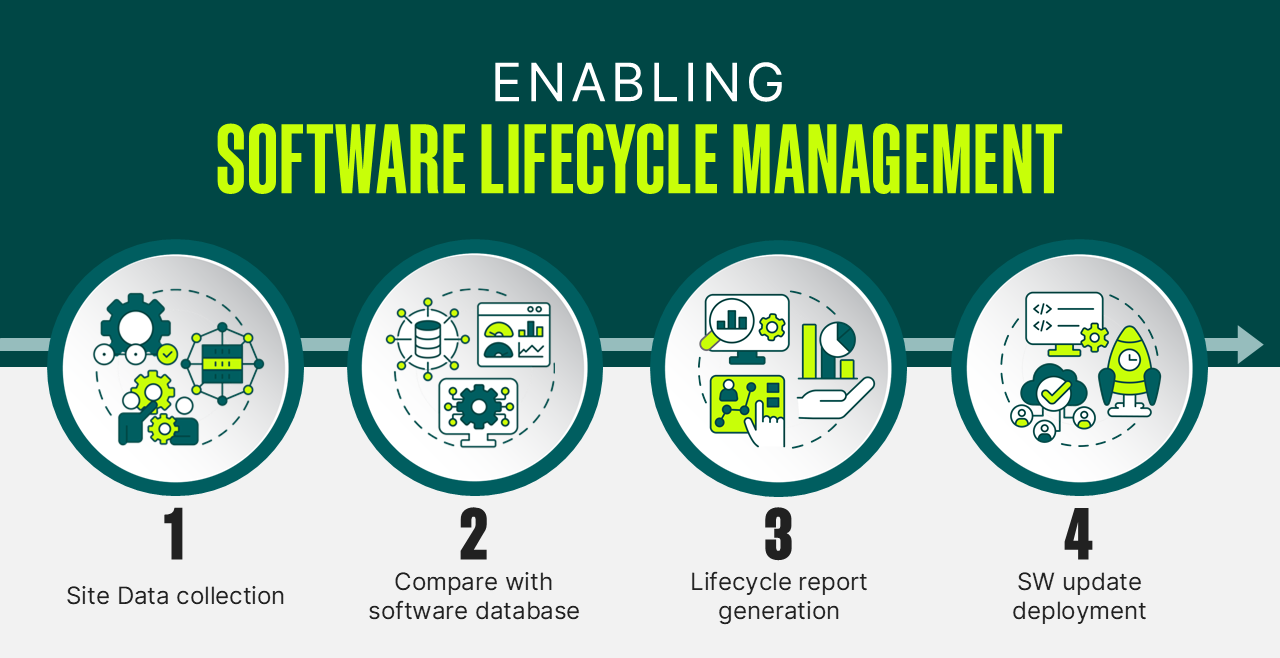The importance of software maintenance
By Ramesh Pai and Thaha Nazeemudeen
October 27, 2025
5 min. read
Prefer to listen?
Your software plays a central role in ensuring system reliability, mitigating cybersecurity risks and addressing performance bottlenecks. In this post, we'll discuss the importance of keeping your control systems current with the latest software. Offered within the Controls Lifecare agreements, GE Vernova's software maintenance service—inclusive of updates and upgrades as needed—can help you be cyber compliant and safeguard your operations from the unexpected. Furthermore, staying current with the latest version of ControlST** enables the installation of latest Mark VIe** hardware with ease at the time of need.
Software maintenance which is an integral part of long-term lifecare agreements can help you protect against cyber threats, manage costs, and maintain uptime. Other key benefits of software maintenance include the following:
Data collection is your first step in strategizing a strong lifecycle management process. This begins with capturing the as-installed control system configuration, including as installed software details via two Next Unit of Computing (NUC) small computers. Then a relatively comprehensive report with lifecycle status and updates requirements is generated after comparing the collected data with the latest software lifecycle database.
The software lifecycle status report enables customers to get a comprehensive overview of required Human Machine Interface (HMI), network hardware and software updates; strategic software deployment plays an important role in ensuring systems are running more efficiently and in alignment with today's standards.
But collecting system data cannot risk security. Therefore, we have engineered our tools to collect data in read-only mode without interfering the normal unit operation and to avoid collecting any personal information. Furthermore, the collected data is encrypted during both transmission and storage. We follow secure-by-design principles, run regular accuracy checks, and use strict authentication processes. The result is a trusted, compliant solution that protects your systems with an aim not to put your data at risk.

Software maintenance is a critical safeguard. Each software update is an opportunity to help improve security, fix known issues, and introduce more useful features. They also improve system compatibility and performance to protect against cyber threats and help ensure compliance with current security regulations. Technology is always evolving and keeping your software current helps maintain system usability, performance, and future readiness.
We introduced the term updates but in the context of software, it’s important to understand the difference between a software update and a software upgrade.
Understanding the distinction helps with planning maintenance windows and managing costs.
GE Vernova offers currently validated software as part of software maintenance service to help maintain performance, security, and cyber compliance. The scope of software maintenance includes of the following but not limited to:
In case of software and hardware upgrades over a long term, GE Vernova aims to provide the latest validated software and hardware that are functionally equivalent to existing installation. This approach helps ensure that software remains compliant and compatible with evolving regulatory and technical environments.
Your software maintenance is a strategic decision that affects your entire operation—not just IT tasks. With a clear lifecycle management plan and trusted tools in place, you can manage the lifecycle of your system seamlessly, reduce risk, and help meet evolving cybersecurity requirements.


Controls Senior Engineer
Ramesh Pai is a Senior Engineer specializing in Controls Lifecare Services at GE Vernova.
Senior Product Manager - Controls Lifecare Services
Thaha Nazeemudeen is a Senior Controls Product Manager responsible for developing and managing Lifecare products and multi-year agreements at GE Vernova.
*This voiceover has been generated using artificial intelligence technology. While reasonable efforts have been made to ensure accuracy, this voiceover may contain inaccuracies or mispronunciations. The original written blog post remains the authoritative source.
**Trademark of GE Vernova and/or its affiliates
Contact us